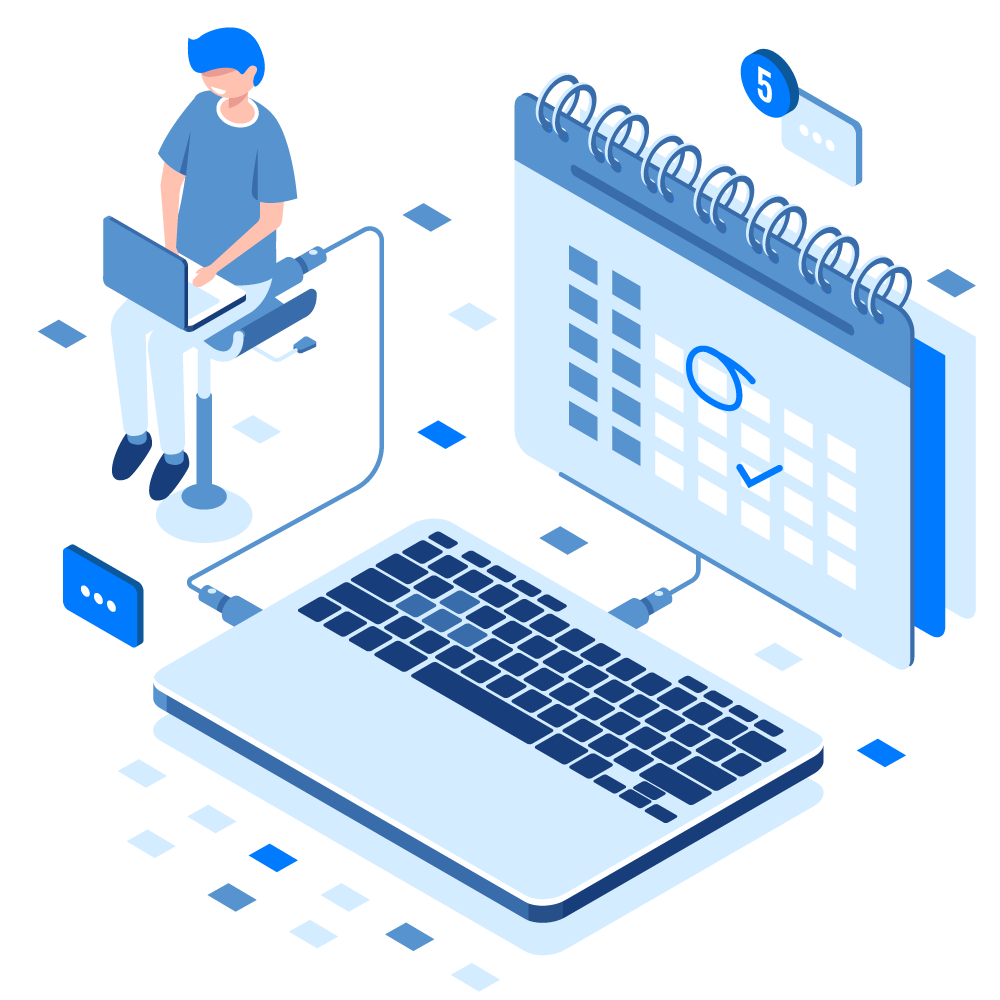ACTE New Technology of web designing, it is quite easy to miss out on esteemed opportunities available. This situation is even worse when one does not have the expertise to tap on these changes. Well, this is the scenario for businesses which have limited knowledge of web design. Website services have tremendously changed how the business industry works. So, for serious entrepreneurs or companies wishing to know the importance of websites this article provides just that. Enroll in ACTE Class Room & Online Web Design Training Course
If you would rather stick to just the one thing, web development is great for those wanting to become an expert. ... Whether it is Web Designing & DevelopmentScript, CSS or HTML a career in web development allows you to focus on areas you enjoy and excel at, essentially becoming a leader in your field. As we mentioned, the field of web design expected to grow by 27% percent by the year 2024. ... According to The Bureau of Labour Statistics, web designers who have knowledge in multiple programming languages and digital tools will have the best opportunities for advancement and obtain the highest levels of job security.
Web designing is an important course, which has lot of scopes in the present and in future. Website designing is an important part of IT industry. For web designing on needs to have a certificate of the same from a good institute. To be a good web designer you should have a complete knowledge of CSS and HTML. There are huge opportunities available for the students who want to work in this field. Many private and public organizations hires web designer for their online work and website development.
Demand is booming for web developers — along with need for more tech skills. Web developers and designers have always been the bedrock of company internet strategy, and their services are more essential than ever, as web technology hits another innovation sprint. Employment of web developers projected to grow 20 percent from 2012 to 2022, faster than the average for all occupations. Demand will drive by the growing popularity of mobile devices and e-commerce. Employers often use the terms web design and web development interchangeably.
We are happy and proud to say that we have strong relationship with over 700+ small, mid-sized and MNCs. Many of these companies have openings in Web Design & Development. Moreover, we have a very active placement cell that provides 100% placement assistance to our students. The cell also contributes by training students in mock interviews and discussions even after the course completion.
The job of a web developer is full of creativity and experiments. Using your ideas you can draw and design anything that fascinates people. People who are involved in such kind of jobs where they are not asked to perform any repetitive functions like to work. They like to spend more of their time doing work, and challenging things to come up with new and innovative ideas. In that, if you know how to use frameworks nobody can stop you from being the master of your field.
If you look at a web developer salary, it does appear at first glance that a web developer salary is a LOT more money than a web designer salary: Web designer: $66,000. Web developer: $87,000. Overall, web designers tend to earn less than web developers do. According to Pay Scale, the median web designer salary in the US is $40,001 (as of late 2020). Also found on Pay Scale, the median web developer salary in the US is $58,262 (as of late 2020).
Web designers should not only know how to design elements visually but also have appropriate code skills in front-end development. Although programming your own code building is not necessary, a basic understanding of the functionality of HTML, CSS and Web Designing & Development Script is essential. A web developer or programmer is someone who takes a web design has been created by either a client or a design team and turns it into a website. They do this by writing lines and lines of complicated code, using a variety of languages.
Our courseware is designed to give a hands-on approach to the students in Web Design & Development. The course is made up of theoretical classes that teach the basics of each module followed by high-intensity practical sessions reflecting the current challenges and needs of the industry that will demand the students’ time and commitment.
Yes, it is Worthy to learn Web Designing in 2020. Web Designing is one of the best career options to choose a profession these days. In addition, in 2020 we have many updated techniques to be a good web designer. If you are looking forward to becoming a good web designer learn upcoming web design trends. As the world become more digitized, the need for the services of a web developer is increasing at a very fast rate.
Web designing is an important course, which has lot of scopes in the present and in future. Website designing is an important part of IT industry. The future of web design and development in 2020 increased by 90℅ as per market research. 2020 is a digital edge and people from around the world are very interested in online. That means Website development market is boosting and it has very huge demand in 2021
One of the best aspects of becoming a web designer is the ability to help companies achieve success online. Nowadays, a company's first impression largely based on the aesthetics of its website. As a web designer, you get an opportunity build visually appealing sites that will give consumers great first impressions. Feed your creative side. From graphics to colour schemes, website design jobs let you use artistic skills in your day-to-day work.
Web Desing:
The top ten benefits of responsive web design
Responsive web design benefits designers, developers, businesses and, most importantly, users in the following ways:
1. More mobile trafficAccording to a report from SimilarWeb, more than half of traffic to top websites in the U.S. came from mobile devices in 2015. Therefore, it's increasingly important for companies to have websites that render properly on smaller screens so that users don't encounter distorted images or experience a sub-optimal site layout. While some businesses still choose to have a separate version of their website for mobile users, responsive design is becoming the norm because it offers greater versatility at lower development costs.
2. Faster mobile development at lower costsMaking one responsive website takes considerably less time than making a stand-alone mobile application in addition to a standard desktop website. Since time is money, responsive design naturally costs less than the alternative. Even if the initial investment of a responsively designed website does end up comes out to being more expensive than creating two separate websites, you'll end up saving in the long run due to maintenance costs, special configuration costs, etc of a website that uses two separate versions.
3. Lower maintenance needsMaintaining a separate mobile site requires additional testing and support. In contrast, the process of responsive design uses standardized testing methodologies to ensure optimal layout on every screen. Having separate desktop and mobile sites also necessitates two content strategies, two administrative interfaces and potentially two design teams. Responsive design's "one size fits all" approach means less headache for developers, business owners, and consumers. Spending less time on maintenance also frees up time to focus on more important things like marketing and content creation.
4. Faster pagesMobile users in particular have short attention spans. Studies show that mobile visitors tend to abandon web pages that take longer than three seconds to finish loading. If a site isn't optimized for smartphones and tablets, it will also take more time to navigate, which can frustrate customers to a point of no return. Ensuring that your responsive website uses modern performance techniques such as caching and responsive image display will help improve your web page loading speed.
5. Lower bounce ratesA responsive and optimized mobile site provides a much better user experience for the visitor. Therefore, it is much more likely that they'll stick around for a longer period of time and explore different areas of your site. Alternatively, if your site isn't responsive, it is much harder to keep the visitor engaged and therefore more likely that they'll bounce.
6.Higher conversion ratesLowering your bounce rate is only half of the battle. Creating a consistent user experience across all devices is key to converting new customers. When users are deciding whether or not to subscribe to a service, they don't want to be redirected to device-specific websites because the process often takes longer. Having a single secure website that looks professional on all platforms makes users less likely to get frustrated or turn to a competitor.
7. Easier analytics reportingKnowing where traffic is coming from and how users interact with your website is necessary to make informed improvements. Managing multiple versions of a website requires developers to track users' journeys through multiple conversion paths, funnels, and redirects. Having a single responsive site greatly simplifies the monitoring process. Google Analytics and similar tools now cater to responsive websites by condensing tracking and analytics into a single report so that you can see how your content is performing on different devices.
8. Improved SEOResponsive web design is becoming as important to search engine optimization as quality content. Stronger backlinks and better bounce rates translate into higher search rankings, but there's an extra benefit for mobile optimized sites.
9. Improved online browsing experienceFirst impressions are everything, so whether someone is visiting a website for the first time from their desktop or their smartphone, you want them to have a consistently positive experience. If visitors must do a lot of zooming, shrinking and pinching their screens during their first visit, they're likely to give up and try another website.
10. Improved offline browsing experienceNow that many smartphones and tablets are HTML5 enabled, responsive web design benefits users by making it easier to continue viewing content within HTML5 web applications without an internet connection.






























